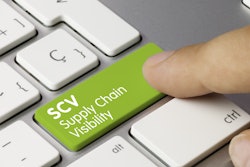
When wielded correctly, data has immense potential to optimize business operations and keep up with recent consumer behavior changes. However, it also serves as a reminder that sometimes, there can be too much of a good thing.
Oftentimes, companies may lack the tools necessary to grapple with the volume of data generated by their organization, but this shouldn’t discourage them from pursuing its implementation. By pinpointing the hurdles presented by massive amounts of data, business leaders can overcome current market challenges to achieve efficiency-driving and cost-cutting outcomes at scale.
More data than you can effectively manage
Companies have a wealth of data but often lack the bandwidth to effectively process and leverage it all to achieve their business goals. Take for example, a watch manufacturer who manages a product catalogue of over 2,000 SKUs. Every year, it faces a demand forecasting challenge where it needs to anticipate sales volume across the catalogue nine months in advance of the holiday buying season in order to place orders from their suppliers. The sheer volume of data the company needs to process and analyze is simply not practical within the timeframe.
Other companies may be looking at even greater volumes of sales data coming from multiple sources that feed into inventory, purchasing and stocking decisions. The immense volume of data being produced can be overwhelming, and for many decision-makers, effectively unmanageable. Tools that can help with managing large amounts of data in a reasonable time are essential to the decision-making process.
Data in silos
The data required to make decisions is often spread across numerous internal and external departments, supplier channels, including vendor information, customer touch points and even global datasets. In order to gain the "big picture" clarity necessary to make informed decisions, companies must integrate the data found in internal silos, from external suppliers, as well as data from their brick-and-mortar stores, digital selling channels and third-party retailers. And, what about other data sources like weather, traffic patterns or global events that might affect buyer behavior or supplier performance? These data sources hold an additional wealth of insight that can dramatically impact trends, patterns, anomalies and the factors affecting them.
One customer used image data from its point-of-sale terminals, transforming it into a tabular dataset that they then used to predict consumer behavior and patterns in order to recommend when was the ideal time to purchase ad space on the terminals. They included external weather and geolocation data to increase the accuracy of the understanding of the behavior. Tapping into a broad set of data helped them build a complete picture of the buyer, accelerate accuracy, and ultimately, positively impact purchasing decisions.
Data that continues to grow
The amount of data currently available is a combination of both historical and a never-ending influx of new data. If teams want to keep up with their growing data demands, they need to be artificial intelligence (AI)-empowered in order to tackle business problems using their data and find new ways to look at challenges from multiple angles to yield optimal results.
Spotting trends within the data
With a surplus of data, it is difficult to get detailed insights into the current market trends and patterns driving your supply chain. AI or machine learning (ML) tools bring together large volumes of data from internal or external data sources and more to quickly analyze and find microtrends like spikes in demand or fluctuations in the availability of parts, including in the short-term.
Understanding AI predictive trend insights before they happen allows consumer packaged goods (CPG) decision-makers to proactively adapt to these variabilities, minimize unfavorable cost impacts and maximize business opportunities. Not only does it drive business marketing revenue, but it can also inform demand forecasting, inventory management and reduce overstock and missed targets.
Lacking data resources
Currently, many organizations rely primarily on their data analysts and business leaders to provide insights, predictions and recommendations. However, whether it be due to the volume, type or complexity of the data, they need more advanced tools like AI and ML to perform deep analysis on their data.
Unfortunately, most companies lack the necessary specialized data science resources with ML and AI expertise. Or, if they do, they may be pulled in multiple directions according to other back-office business priorities and are not available to the team as often or as much as they might require.
How can enterprise AI software help?
Businesses engaged in supply chain economics are looking to AI to quickly develop an edge to surpass recent market shifts.
A 2019 global AI study from McKinsey found “the use of AI and advanced analytics has been shown to generate at least 10% in revenue growth for CPG companies.”
Another customer identified more than 23 million unique visitors each month on their website, which subsequently generated an immense volume of data. Faced with challenges in analyzing and making predictions with the data at hand, they turned to AI and machine learning tools to accelerate and maximize the delivery of predictive models. This pivot toward AI yielded a 60% acceleration of the time-to-market of the customer’s predictive models and effectively allowed them to wield their data to the fullest extent.
Enterprise AI software is the game-changing technology that extends the availability of AI to organizations that want the benefit of AI, but without the data teams. Businesses are able to process and analyze vast amounts of data, from numerous sources, quickly, and gain in-depth insights into various behaviors and trends that impact the bottom line.




















